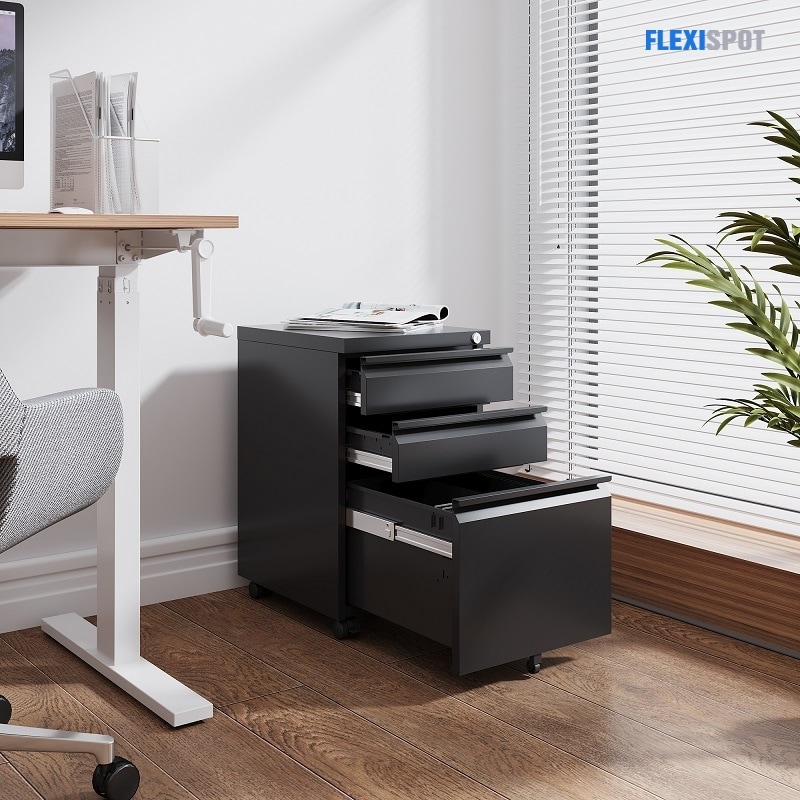Cabinets have been around since the late Renaissance. It was characterized by an artistic period called Mannerism leading up to the start of Baroque art in the 17th century. At that time, cabinets were also another form of art through showcasing craftsmanship in marquetry, carving, inlay, and gilding. This piece of furniture was used as a storage unit for china, coins, shells, and curiosities.
Come 1890, the filing cabinet was invented to improve efficiency. Its invention has been instrumental in influencing the way people access and structure information.
Over decades and centuries, it has stayed and endured even through this digital era that we live in right now. Digital documents have taken overprinted copies but aside from people still needing something tangible, it is important to note that computers and memory drives still fail. We’re calling it that paper documents would probably never be faced out because they serve as extra copies if ever the digital file gets lost or corrupted. The traditional file organization is easily accessible and within arms reach anytime you need it. It’s also easy to understand as long as you keep a system in place as to how you’ll categorize the documents even before filling in the drawer.
Today, there are four types of modern filing cabinets.
1. Horizontal Filing Cabinets
A filing cabinet is considered horizontal when printed documents are inserted into folders that will be on top of each other. This won’t take up much floor space but would already be able to store a lot of documents.
2. Vertical Filing Cabinets
Among the four types, this is the most common filing cabinet. Folders are placed upright and like the previous type mentioned, vertical filing cabinets save space and can keep important documents in storage. It is smaller in width than lateral filing cabinets.
3. Lateral Filing Cabinets
As the name suggests, documents are stored laterally along the shelf with index strips on both ends of the files. In order words, the files are arranged side by side that runs through the length of the drawer. This filing system type usually has multiple drawers and is perfect for businesses that require tons of document filing.
Flexispot has three lateral file cabinet offerings: a two-drawer, a three drawer, and a wood lateral file cabinet. The two-drawer file cabinet is made up of an all-steel firm structure. It comes with a lockable function, a three management lock that includes a master key and a change barrel key. The drawer slides are full-extension ball bearing that accessing any folder would come easy. It also has an adjustable hanging bar that can hang an A4 size, letter size, or legal-size file folders. Lastly, it has an anti-tilt mechanism characterized by drawers with side-to-side hang rails.
The three-drawer lateral file cabinet has the same features but could carry more space because of its additional third tier.
The wood lateral file cabinet comes in brown and walnut. It is made of a high-quality MDF board that has a specially coated, scratch-resistant surface. It is durable and strong plus the design is perfect for any home office aesthetic. The cabinet has one large file drawer at the bottom and two surfaces above it that can carry other documents and office materials or room decors such as coffee table books, plants, vases, and diffusers.
4. Open-Shelf Filing Cabinets
Folders and documents are arranged numerically and placed on open shelves for this type. The shelves are spaced in a way that two rows won’t collide with each other and for people to access their files more easily.
How to Arrange Documents in Your Filing Cabinet
Arranging documents in your filing cabinet is no easy task. It’s not simply inserting documents and hanging them mindlessly per drawer. You need to think about categorizing or arranging your documents in a way that you’ll be able to refer to them in the future, meaning you would know where is what depending on the filing system that you decide to use. Bear in mind that for most industries, filing cabinets last for years. The storage units keep records and documents going back ten years ago up to the present.
This is why choosing the correct, suitable filing system for your type of documents is very crucial. You may opt to arrange it alphabetically, numerically, topically, or using a completely devised scheme of your own.
A suggestion online from Elizabeth Larkin is to make five piles: action pile (those that have to be discarded after use); archive pile (files that need to be kept but not viewed regularly); house pile (includes documents to keep business running smoothly; recycle pile (junk documents that may be reused as scratch paper or recycled later on); and lastly, the shred pile (can be recycled but contain confidential information).
You have to consider what types of files will be stored in your filing cabinet and who else will be using the cabinet and will be needing access to the files. Ask them what the most suitable set-up for them is.
Once you’ve chosen a system, you need to have a record of everything you’ll put inside the cabinet. This is simply writing down the names of the documents. Names should be short, simple and straightforward so that it’s easy to remember. It should simply describe what is inside the folder so that when you look back in the future, you wouldn’t need to open everything just to see what’s inside. A good labeling system also comes in handy for this and will save you buckets of time.
Take note to buy a filing cabinet that will be able to store more than your current files on hand. As the years go by, more paperwork is added. To save money, make sure to calculate how much paperwork your business will be needing.
Final Thoughts
Filing cabinets may be outdated for some people or industries but they remain to be necessary, especially in official documents that have to be printed, signed, and notarized. While digital filing systems are more efficient, the traditional way must still be kept to ensure extra and official copies of the documents to be organized.



